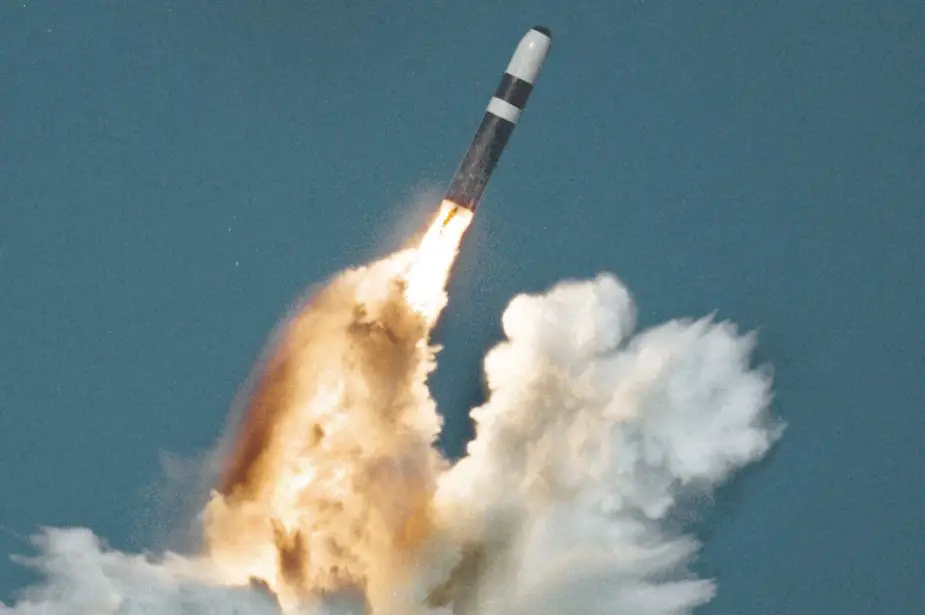Breaking news
General Dynamics Electric Boat to provide U.S. Trident II Strategic Weapon System ship alterations.
General Dynamics Electric Boat Corp. (GDEB), Groton, Connecticut, is awarded $60,594,296 for a cost-plus-fixed-fee contract to provide U.S. Trident II Strategic Weapon System (SWS) ship alterations and United Kingdom SWS ship alterations for Strategic Systems Program shipboard integration installations. Work is expected to be complete by April 2024.
 United States Trident II (D-5) missile underwater launch (Picture source: U.S. Department of Defense)
United States Trident II (D-5) missile underwater launch (Picture source: U.S. Department of Defense)
The Trident missile is a submarine-launched ballistic missile (SLBM) equipped with multiple independently targetable reentry vehicles (MIRV). Originally developed by Lockheed Missiles and Space Corporation, the missile is armed with thermonuclear warheads and is launched from nuclear-powered ballistic missile submarines (SSBNs). Trident missiles are carried by fourteen United States Navy Ohio-class submarines, with American warheads, as well as four Royal Navy Vanguard-class submarines, with British warheads. The missile is named after the mythological trident of Neptune.
The Trident II is a three-stage rocket, each stage containing a solid-fuel rocket motor. The first motor is made by Northrop Grumman. This first stage incorporates a solid propellant motor, parts to ensure the first-stage ignition, and a thrust vector control (TVC) system. The first-stage section, compared to the Trident C-4, is slightly larger, allowing increased range and a larger payload. In addition to a larger motor, the D-5 uses an advanced and lighter fuel binder (polyethylene glycol) than the C-4.[29] This fuel is more commonly known as NEPE-75 (NEPE stands for nitrate ester plasticized polyether).
The second variant of the Trident is more sophisticated and can carry a heavier payload. It is accurate enough to be a first strike, counterforce, or second strike weapon. All three stages of the Trident II are made of graphite epoxy, making the missile much lighter. The Trident II was the original missile on the British Vanguard-class and American Ohio-class SSBNs from Tennessee on. The D5 missile is currently carried by fourteen Ohio-class and four Vanguard-class SSBNs. There have been 172 successful test flights of the D5 missile since design completion in 1989, the most recent being from USS Rhode Island in May 2019. There have been fewer than 10 test flights that were failures, the most recent being from HMS Vengeance, one of Britain's four nuclear-armed submarines, off the coast of Florida in June 2016.
The Royal Navy operates their missiles from a shared pool, together with the Atlantic squadron of the U.S. Navy Ohio-class SSBNs at King's Bay, Georgia. The pool is 'co-mingled' and missiles are selected at random for loading on to either nation's submarines.


























